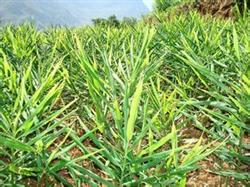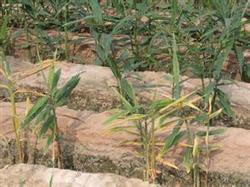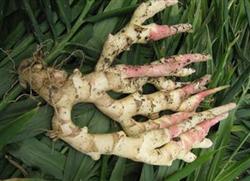How to harvest ginger and keep seeds

According to the use of the product, the harvest of ginger can be divided into ginger, tender ginger and old ginger. Ginger is usually planted in late June, with 4-5 leaves of seedling height. Carefully pluck the soil, gently break the ginger at the place where the ginger is connected to the new ginger, and take out the ginger. If the harvest is too late, the root group will be damaged too much, which will affect the continued growth and yield of ginger plants. Harvest ginger, also known as "roast ginger", "steal Niang ginger". Ginger seeds can be sold in advance and benefit early, but when it is rainy, it is easy to cause root rot, which is beneficial to bacterial infection in the wound. Tender ginger can be harvested one after another from August. The earlier the harvest, the lower the yield. It is generally harvested from September to October, and it should be finished before Frosts Descent at the latest, so as to avoid freezing injury and decay. The tissue with early harvest is tender, has more water content and less spicy taste, and is not resistant to storage. The later harvested rhizomes were dilated, more cellulose, less water content and heavier spicy taste. The harvest of ginger is generally carried out before the arrival of the first frost, when the aboveground stems and leaves begin to wither and yellow, and the roots are old and ripe. At this time, the harvest is high in yield, resistant to storage and heavy in spicy taste, which can be used as ginger, seasoning or dried ginger. Ginger for seed use should be set up for seed use. Apply more potash fertilizer and less nitrogen fertilizer during the growing period. Dry for a few days after harvest to reduce the surface moisture of ginger. Choose healthy, full, disease-free and damage-free ginger cubes for storage.
- Prev

How to effectively control ginger stem rot
In recent years, with the continuous expansion of ginger continuous cropping area and extensive field management, the disease of ginger is also aggravating, especially since June, because of high temperature and rain, ginger stem rot is the most likely to occur. Recently, Li Hualiang and Lu Changlei in Renzhao Town, Pingdu City, Shandong Province, and Yu Wanquan in Ju County reflected that.
- Next

Key points of management techniques for high quality and high yield of ginger
First, select the sandy land with deep soil layer, loose and fertile soil and convenient drainage and irrigation, and avoid continuous cropping. 2. Before soil preparation and basic fertilizer sowing, farm manure 1000, 500 kg per mu, calcium magnesium phosphate fertilizer 50 kg, and compound fertilizer 20 kg should be applied as base fertilizer. After application, ploughing and raking should be fully done. Separate borders and open ditches, each 1 wide.
Related
- Where is it suitable to grow horseradish in China? it is expected to see the middle altitude horseradish in Alishan.
- How to prevent tomato virus disease reasonably? (Control methods included)
- Many people like to plant towel gourd on the balcony. What are the main points of this method and management?
- What crops can chili peppers be mixed with?
- Fertilization techniques and matters needing attention in Tomato
- What are the grafting techniques for peach seedlings in spring?
- Harm and control methods of root swelling disease of Chinese cabbage
- What are the pests of sweet potatoes? How to prevent and cure it?
- Symptoms, causes and Control methods of navel Rot in Tomato
- The cause of "Cucumber rotten bibcock" in Farmers' planting Cucumber and its Control Plan

